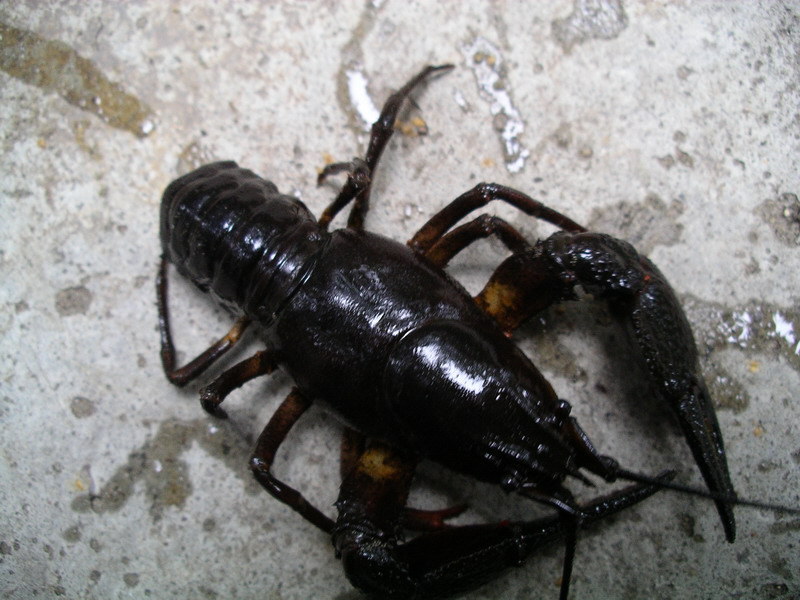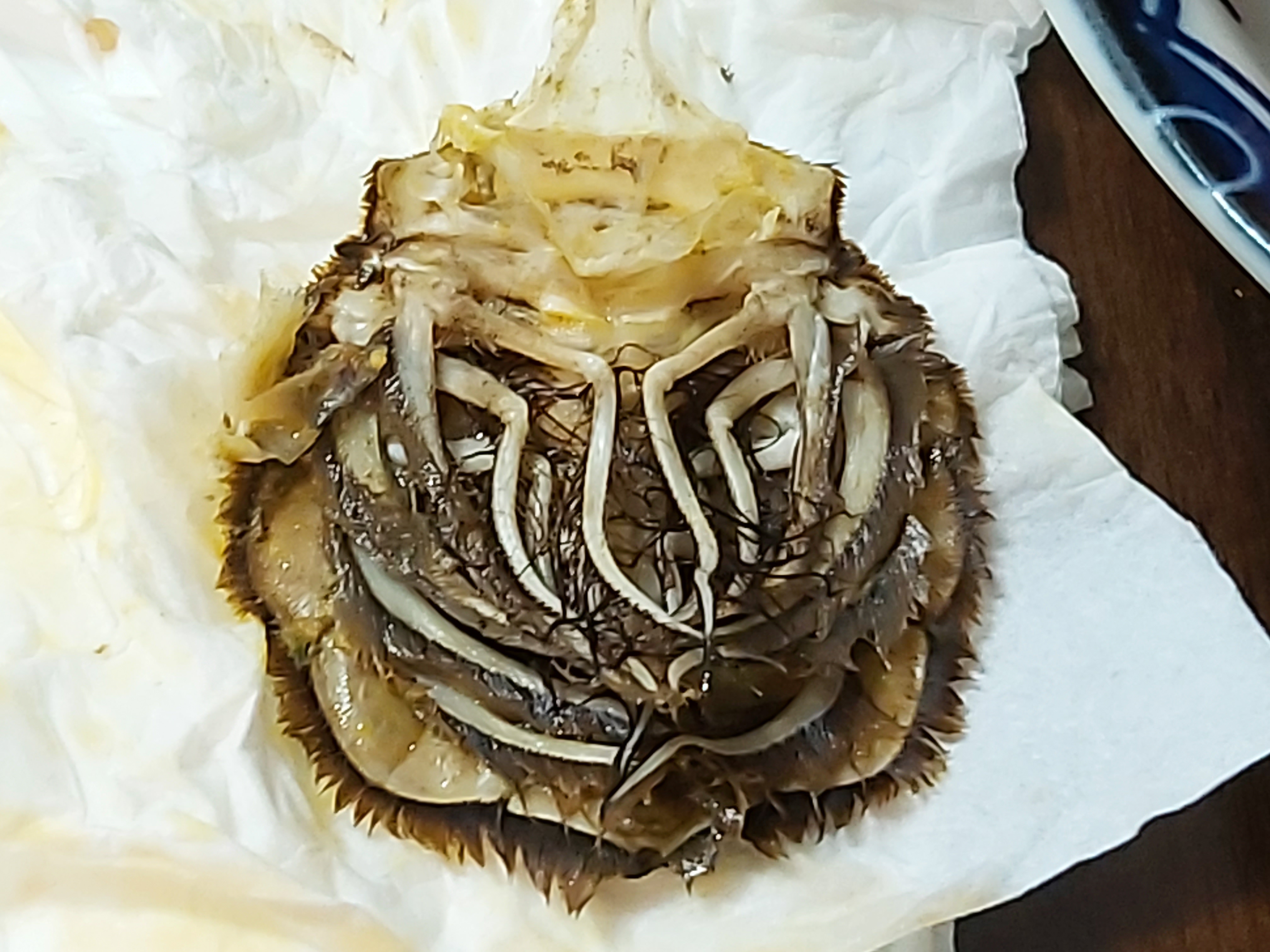|
Astacus Astacus
''Astacus astacus'', the European crayfish, noble crayfish, or broad-fingered crayfish, is the most common species of crayfish in Europe, and a traditional food source. Like other true crayfish, ''A. astacus'' is restricted to fresh water, living only in unpolluted streams, rivers, and lakes. It is found from France throughout Central Europe, to the Balkan Peninsula, and north as far as Scandinavia and Finland, and Eastern Europe. Males may grow up to 16 cm long, and females up to 12 cm. Ecology European crayfish feed on worms, aquatic insects, molluscs, and plants. They are nocturnal, spending the day resting in a burrow. They prefer habitats with high levels of shelter availability. The waters they are found in tend to be soft-bottomed with some sand, and they do not tend to be found in muddy water. ''A. astacus'' become sexually mature after three to four years and a series of moults, and breed in October and November. Fertilised eggs are carried by the femal ... [...More Info...] [...Related Items...] OR: [Wikipedia] [Google] [Baidu] |
Astacus Astacus Astacus
''Astacus'' (from the Greek , ', meaning "lobster" or "crayfish") is a genus of crayfish found in Europe and western Asia, comprising three extant (living) species and three extinct fossil species. Due to the crayfish plague, crayfish of this genus have declined in many European regions, being replaced by the invasive North American signal crayfish, which carries the plague but is unaffected by it. Classification ''Astacus'' belongs to the family Astacidae, one of the three families of Northern Hemisphere freshwater crayfish within the superfamily Astacoidea. The internal phylogeny of Astacidae can be shown in the cladogram below: Extant species *''Astacus astacus'' (Linnaeus, 1775) - known as the "European crayfish", "noble crayfish" or "broad-fingered crayfish" - it is distributed across Europe, in France throughout Central Europe, to the Balkan Peninsula, and north as far as parts of the British Isles, Scandinavia, and the western parts of the former Soviet Union. It i ... [...More Info...] [...Related Items...] OR: [Wikipedia] [Google] [Baidu] |
The IUCN Red List Of Threatened Species
The International Union for Conservation of Nature (IUCN) Red List of Threatened Species, also known as the IUCN Red List or Red Data Book, founded in 1964, is the world's most comprehensive inventory of the global conservation status of biological species. It uses a set of precise criteria to evaluate the extinction risk of thousands of species and subspecies. These criteria are relevant to all species and all regions of the world. With its strong scientific base, the IUCN Red List is recognized as the most authoritative guide to the status of biological diversity. A series of Regional Red Lists are produced by countries or organizations, which assess the risk of extinction to species within a political management unit. The aim of the IUCN Red List is to convey the urgency of conservation issues to the public and policy makers, as well as help the international community to reduce species extinction. According to IUCN the formally stated goals of the Red List are to provide ... [...More Info...] [...Related Items...] OR: [Wikipedia] [Google] [Baidu] |
Perch
Perch is a common name for fish of the genus ''Perca'', freshwater gamefish belonging to the family Percidae. The perch, of which three species occur in different geographical areas, lend their name to a large order of vertebrates: the Perciformes, from the el, πέρκη (), simply meaning perch, and the Latin ''forma'' meaning shape. Many species of freshwater gamefish more or less resemble perch, but belong to different genera. In fact, the exclusively saltwater-dwelling red drum is often referred to as a red perch, though by definition perch are freshwater fish. Though many fish are referred to as perch as a common name, to be considered a true perch, the fish must be of the family Percidae. The type species for this genus is the European perch, ''P. fluviatilis''. Species Most authorities recognize three species within the perch genus: * The European perch (''P. fluviatilis'') is primarily found in Europe, but a few can also be found in South Africa, and even as ... [...More Info...] [...Related Items...] OR: [Wikipedia] [Google] [Baidu] |
European Mink
The European mink (''Mustela lutreola''), also known as the Russian mink and Eurasian mink, is a semiaquatic species of Mustelidae, mustelid native to Europe. It is similar in colour to the American mink, but is slightly smaller and has a less specialized skull. Despite having a similar name, build and behaviour, the European mink is not closely related to the American mink, being much closer to the European polecat and Siberian weasel (''kolonok'').MARMI, J., LÓPEZ-GIRÁLDEZ, J.F. & DOMINGO-ROURA, X. (2004). Phylogeny, Evolutionary History and Taxonomy of the Mustelidae based on Sequences of the Cytochrome b Gene and a Complex Repetitive Flanking Region. Zoologica Scripta, 33: 481 - 499 The European mink occurs primarily by forest streams unlikely to freeze in winter. It primarily feeds on voles, frogs, fish, crustaceans and insects. The European mink is listed by the IUCN as Critically Endangered due to an ongoing reduction in numbers, having been calculated as declining more ... [...More Info...] [...Related Items...] OR: [Wikipedia] [Google] [Baidu] |
Predator
Predation is a biological interaction where one organism, the predator, kills and eats another organism, its prey. It is one of a family of common feeding behaviours that includes parasitism and micropredation (which usually do not kill the host) and parasitoidism (which always does, eventually). It is distinct from scavenging on dead prey, though many predators also scavenge; it overlaps with herbivory, as seed predators and destructive frugivores are predators. Predators may actively search for or pursue prey or wait for it, often concealed. When prey is detected, the predator assesses whether to attack it. This may involve ambush or pursuit predation, sometimes after stalking the prey. If the attack is successful, the predator kills the prey, removes any inedible parts like the shell or spines, and eats it. Predators are adapted and often highly specialized for hunting, with acute senses such as vision, hearing, or smell. Many predatory animals, both vertebra ... [...More Info...] [...Related Items...] OR: [Wikipedia] [Google] [Baidu] |
Pleopod
The decapod (crustaceans such as a crab, lobster, shrimp or prawn) is made up of 20 body segments grouped into two main body parts: the cephalothorax and the pleon (abdomen). Each segment may possess one pair of appendages, although in various groups these may be reduced or missing. They are, from head to tail: Cephalothorax Head #antennules # antennae # mandibles # first maxillae # second maxillae The head also bears the (usually stalked) compound eyes. The distal portion of a mandible or maxilla which has a sensory function is known as a palp. Thorax / pereon #first maxillipeds #second maxillipeds #third maxillipeds #first pereiopods #second pereiopods #third pereiopods #fourth pereiopods #fifth pereiopods Maxillipeds are appendages modified to function as mouthparts. Particularly in the less advanced decapods, these can be very similar to the pereiopods. Pereiopods are primarily walking legs and are also used for gathering food. They are also the ten legs from which decapo ... [...More Info...] [...Related Items...] OR: [Wikipedia] [Google] [Baidu] |
Fertilisation
Fertilisation or fertilization (see spelling differences), also known as generative fertilisation, syngamy and impregnation, is the fusion of gametes to give rise to a new individual organism or offspring and initiate its development. Processes such as insemination or pollination which happen before the fusion of gametes are also sometimes informally called fertilisation. The cycle of fertilisation and development of new individuals is called sexual reproduction. During double fertilisation in angiosperms the haploid male gamete combines with two haploid polar nuclei to form a triploid primary endosperm nucleus by the process of vegetative fertilisation. History In Antiquity, Aristotle conceived the formation of new individuals through fusion of male and female fluids, with form and function emerging gradually, in a mode called by him as epigenetic. In 1784, Spallanzani established the need of interaction between the female's ovum and male's sperm to form a zygote ... [...More Info...] [...Related Items...] OR: [Wikipedia] [Google] [Baidu] |
Ecdysis
Ecdysis is the moulting of the cuticle in many invertebrates of the clade Ecdysozoa. Since the cuticle of these animals typically forms a largely inelastic exoskeleton, it is shed during growth and a new, larger covering is formed. The remnants of the old, empty exoskeleton are called exuviae. After moulting, an arthropod is described as ''teneral'', a ''callow''; it is "fresh", pale and soft-bodied. Within one or two hours, the cuticle hardens and darkens following a tanning process analogous to the production of leather. During this short phase the animal expands, since growth is otherwise constrained by the rigidity of the exoskeleton. Growth of the limbs and other parts normally covered by the hard exoskeleton is achieved by transfer of body fluids from soft parts before the new skin hardens. A spider with a small abdomen may be undernourished but more probably has recently undergone ecdysis. Some arthropods, especially large insects with tracheal respiration, expand thei ... [...More Info...] [...Related Items...] OR: [Wikipedia] [Google] [Baidu] |
Sexual Maturity
Sexual maturity is the capability of an organism to reproduce. In humans it might be considered synonymous with adulthood, but here puberty is the name for the process of biological sexual maturation, while adulthood is based on cultural definitions. Most multicellular organisms are unable to sexually reproduce at birth (animals) or germination (e.g. plants): depending on the species, it may be days, weeks, or years until they have developed enough to be able to do so. Also, certain cues may trigger an organism to become sexually mature. They may be external, such as drought (certain plants), or internal, such as percentage of body fat (certain animals). (Such internal cues are not to be confused with hormones, which directly produce sexual maturity – the production/release of those hormones is triggered by such cues.) Role of reproductive organs Sexual maturity is brought about by a maturing of the reproductive organs and the production of gametes. It may also be accompani ... [...More Info...] [...Related Items...] OR: [Wikipedia] [Google] [Baidu] |
Burrow
An Eastern chipmunk at the entrance of its burrow A burrow is a hole or tunnel excavated into the ground by an animal to construct a space suitable for habitation or temporary refuge, or as a byproduct of locomotion. Burrows provide a form of shelter against predation and exposure to the elements, and can be found in nearly every biome and among various biological interactions. Many animal species are known to form burrows. These species range from small invertebrates, such as the '' Corophium arenarium'', to very large vertebrate species such as the polar bear. Burrows can be constructed into a wide variety of substrates and can range in complexity from a simple tube a few centimeters long to a complex network of interconnecting tunnels and chambers hundreds or thousands of meters in total length; an example of the latter level of complexity, a well-developed burrow, would be a rabbit warren. Vertebrate burrows A large variety of vertebrates construct or use burrows in ma ... [...More Info...] [...Related Items...] OR: [Wikipedia] [Google] [Baidu] |




_with_its_prey.jpg)


